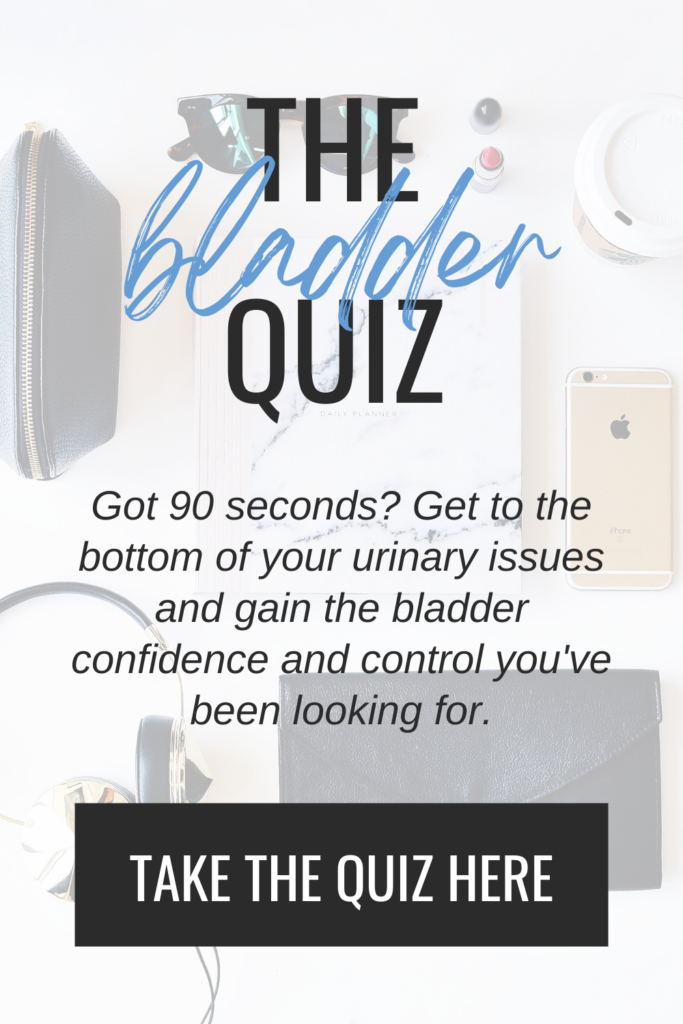You might have heard of the “fourth trimester” or “postpartum months”, but birthing a baby changes nearly everything about you, and postpartum is so much more than a phase you travel struggle through to get to the other side.
Postpartum is forever and there are life-long effects that carrying and birthing a baby can have on the female body. This is not a death sentence for your body, an excuse for unresolved issues, nor encouragement to “live with” pain or dysfunction evermore. Rather, this is an explanation, a gentle whisper to remind you that what you’re experiencing postpartum is normal, followed by a loud reassurance that there’s likely something you can ~and should~ do about it.
Pressure, leakage, pain, lack of strength and control, shifting hormones, and unrelenting fatigue are all common after having a baby, on top of the mental, spiritual and emotional ways you’re forever changed once becoming a mama. There’s no book, blog post, or bestie in the world that can prepare you for those first messy and magical weeks— you kinda have to live it yourself.
As a pelvic rehab therapist, my specialty is in preparing women for the physical changes that are expected postpartum, and then helping them heal once they get there.
The female body goes through amazing things during and after pregnancy, and the infamous expectation to “bounce back” requires guidance, work, and patience.
I want to be honest and realistic in sharing how pregnancy can truly effect the body forever, then follow with the action items necessary for recovery and healing. This is not about your weight, jean size, or stretched skin. Truly “getting your body back” is found in strength, function, confidence, and control, and I’m happy to report that you can begin this journey at four weeks or forty years into your postpartum journey. (AKA- It’s never too late.)
Ligament Laxity
Relaxin is a hormone that’s produced during pregnancy, and it ebbs and flows over ten month’s time to prepare the body to stretch and expand as baby grows and eventually enters the world. Without relaxin, the abdomen and pelvis wouldn’t be able to accommodate a baby full-term and vaginal delivery would be physically impossible.
Unfortunately, relaxin is systemic and doesn’t just target the few areas it’s needed, causing many women to experience aches and pains nearly everywhere at some point in their pregnancy. Relaxin creates lose ligaments, lose ligaments produce mobile joints, and mobile joints can result in pain and instability.
Relaxin stays in the body for up to six months after giving birth, or six months after breastfeeding for those that choose this option. And even though relaxin eventually stops circulating through the system, the effects of prolonged stress on the ligaments can last forever.
Strengthening your body is the best way to effectively compensate for the increased mobility and manage things like joint pain, pelvic pain, and back pain. Any resistance training will do, but these core exercises and this hip strengthening regimen are my favorites for addressing the most common “problem areas” like the low back and pelvis. Consistency is key, and doing each of these 15-minute routines two times a week is enough to see results.
Abdominal Stretching
Maybe you’ve heard of a diastasis? A diastasis is when the linea alba (the ligament down the center of the abdomen) stretches and widens as baby grows during pregnancy (thanks again, relaxin). By about 35 weeks nearly every woman has a diastasis as it’s physically necessary to make room for baby. In some women, the diastasis remains after birth, for others the linea alba overall returns to it’s “normal” state.
Whether you have an actual diastasis postpartum or not, the results of the linea alba stretching can be long-lasting. Postpartum is forever, remember? This can change abdominal muscle tone and function and ultimately alter back and pelvic stability, pelvic pressure, gut motility, and breathing patterns.
There are conservative treatment options for a diastasis; it rarely requires surgery. (Please read that again if you missed it). These specific core exercises help many of my patients, but if you need more guidance, I highly suggest making an appointment with your local pelvic rehab therapist (or come see me if you can *wink wink*).
Even if you don’t have a diastasis to speak of, the way your muscles stretched during pregnancy can create issues in your body down the road, and proactive, preventative management is key. Good posture, a strong core and pelvic floor, and general body awareness (all strategies I cover in detail with a proven roadmap inside my 8-week online course) are vital in healing and/or avoiding problems in the long run.
Pelvic Pressure
No matter how you birthed your baby, prolonged pelvic pressure is a reality in pregnancy as your perfect little person was sitting on your pelvis for a hottttttttttt minute. Excessive, unrelenting stress on muscles, tendons, ligaments, and joints are bound to have a lasting effect on the body.
Common side effects of extended weight on the pelvic floor include pelvic organ prolapse, urinary and bowel issues, and pelvic pain, and these problems can be present in even the strongest of women. It’s important to identify the results of that lasting pressure, then address it—
- Prolonged pressure can trigger poor pelvic coordination and control leading to incontinence. If that’s the case, you can find my top tips for retraining your pelvic floor here.
- Muscle weakness can be caused by prolonged pressure, and you can find my favorite pelvic floor strengthening exercises to address this here.
- Prolonged pressure can cause the pelvic muscles to tense up, resulting in pelvic pain, difficulty urinating, urinary urgency, and constipation. If this is your situation, learn how to relax your pelvic floor here.
- For step by step guidance on all of the above, The Bladder Blueprint will help you identify exactly where you need help and how to go about addressing and resolving your pelvic floor issues with confidence and clarity.
Scarring
Not everyone has scarring postpartum, but those whose pregnancy resulted in a C-Section, perineal/vaginal tearing, or episiotomy will be dealing with the residual effects of poor tissue mobility and adhesions such as pain and poor pelvic control. Studies show that scar tissue can form for up to five years post, but addressing this quickly can make all the difference.
Once cleared by your doctor to start moving your scar tissue (PS- this usually happens around the 6-week mark) you can and should begin working on it immediately.
1. Place your fingertips on your scar, wherever it is, and lightly push into the tissue.
2. Trapping the tissue under your fingers, gently glide one layer of skin on top of the other. This won’t be comfortable, but it should not be unbearable.
3. You can also pinch the tissue and move the scarring around.
4. Look for spots that feel harder or don’t move well and put your focus there.
5. Perform this for 3-5 minutes (~literally~ set a timer) and perform this every other day.
Castor oil can also work miracles for C-Section scars (do not put castor oil on your perineum), and you can find my recommendation on how to use it here.
As I said, postpartum is forever, but…
While postpartum changes have a lasting effect on the body, the opportunity to address these issues is life-long too. AND THERE’S THE GOOD NEWS— it’s never too late to take action and work toward healing. The anatomical and scientifically expected outcomes of pregnancy are kindaaaaaa out of your control, but you do have the power to improve how your body settles into its new normal. #canigetanamen
Do not be defeated by the above. Do not be defined by the above. You are a mother, your body is a postpartum body, but those titles do not mean you’re broken. You are forever transformed in a hundred and one ways once you become a mama— physically, emotionally, and spiritually. Some you can change, others you absolutely shouldn’t. Know where to put your effort and live confidently in the rest.
-Amanda
Disclaimer: The content provided here does not constitute medical advice, nor is it a substitute for personalized healthcare. If you have concerns about a medical condition, diagnosis, or treatment, you should consult with a licensed healthcare professional.
Disclosure: Some of the links above are affiliate links, meaning, at no additional cost to you, I will earn a commission if you click through and make a purchase. No pressure, but I have a feeling you’re gonna like what I’ve taken the time to put my recommendation behind.



















